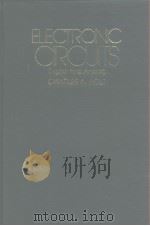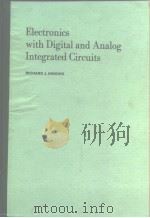《Digital and analog communication systems》
| 作者 | Leon W.Couch H.-6th ed 编者 |
|---|---|
| 出版 | 未查询到或未知 |
| 参考页数 | 758 |
| 出版时间 | 没有确切时间的资料 目录预览 |
| ISBN号 | 0130812234 — 求助条款 |
| PDF编号 | 811368468(仅供预览,未存储实际文件) |
| 求助格式 | 扫描PDF(若分多册发行,每次仅能受理1册) |
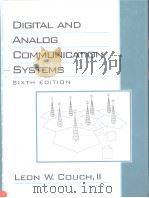
PREFACE17
LIST OF SYMBOLS21
1 INTRODUCTION1
1-1 Historical Perspective2
1-2 Digital and Analog Sources and Systems5
1-3 Deterministic and Random Waveforms6
1-4 Organization of the Book6
1-5 Use of a Personal Computer and MATLAB7
1-6 Block Diagram of a Communication System8
1-7 Frequency Allocations10
1-8 Propagation of Electromagnetic Waves12
1-9 Information Measure16
1-10 Channel Capacity and Ideal Communication Systems18
1-11 Coding19
Block Codes20
Convolutional Codes22
Code Imerleaving25
Code Performance25
Trellis-Coded Modulation28
1-12 Preview29
1-13 Study-Aid Examples29
Ploblems30
2 SIGNALS AND SPECTRA33
2-1 Properties of Signals and Noise33
Physically Reatizable Waveforms34
Time Average Operator35
De Vatue36
Power37
Rms Value and Normalized Power39
Energy and Power Waveforms40
Decibel40
Phasors42
2-2 Fourier Transform and Spectra43
Definition43
Properties of Fourier Transforms46
Parseval s Theorem and Energy Spectral Density48
Dirac Delta Function and Unit Step Function51
Rectangular and Triangular-Pulses54
Convolution58
2-3 Power Spectral Density and Autocorrelation Function61
Power Spectral Density61
Autocorrelation Function63
2-4 Orthogonal Series Representation of Signals and Noise65
Orthogonal Functions65
Orthogonal Series67
2-5 Fourier Series68
Complex Fourier Series68
Quadrature Fourier Series70
PolAr Fourier Series71
Line Spectra for Periodic Waveforms73
Power Spectral Density for Periodic Waveforms77
2-6 Review of Linear Systems79
Linear Time-Invariant Systems79
Impulse Response79
Transfer Function80
Distortionless Transmission83
Distortion of Audio,Videl,and Data Signals84
2-7 Bandlimited Signals and Noise86
Bandlimited Waveforms86
Sampling Theorem87
Impulse Sampling and Digital Signal Processing(DSP)90
Dimensionality Theorem93
2-8 Discrete Fourier Transform94
Using the DFT to Compute the Continuous Fourier Transform95
Using the DFT to Compute the Fourier Series100
2-9 Bandwidth of Signals101
2-10 Summary110
2-11 Study-Aid Examples110
Problems115
3 BASEBAND PULSE AND DIGITAL SIGNALING128
3-1 Introduction128
3-2 Pulse Amplitude Modulation129
Natural Sampling(Gating)129
Instantaneous Sampling(Flat-Top PAM)133
3-3 Pulse Code Modulation137
Sampling,Quantizing,and Encoding138
Practical PCM Circuits138
Bandwidth of PCM Signals142
Effects of Noise143
Nonuniform Quantizing:μ-Law and A-Law Companding147
V.90 56-kb/s PCM Computer Modem151
3-4 Digital Signaling152
Vector Representation153
Bandwidth Estimation155
Binary Signaling156
Multilevel Signaling158
3-5 Line Codes and Spectra160
Binary Line Coding160
Power Spectra for Binary Line Codes163
Differential Coding169
Eye Patterns170
Regenerative Repeaters171
Bit Synchronization173
Power Spectra for Multilevel Polar NRZ Signals176
Spectral Efficiency179
3-6 Intersymbol Interference180
Nyquist s First Method (Zero ISI)182
Raised Cosine-Rolloff Nyquist Filtering183
Nyquist s Second and Third Methods for Control of ISI188
3-7 Differential Pulse Code Modulation188
3-8 Delta Modulation192
Granular Noise and Slope Overload Noise194
Adaptive Delta Modulation and Continuously Variable Slope Delta Modulation197
Speech Coding199
3-9 Time-Division Multiplexing199
Frame Synchronization200
Synchronous and Asynchronous Lines202
TDM Hierarchy206
The TI PCM System211
3-10 Packet Transmission System213
3-11 Pulse Time Modulation:Pulse Width Modulation and Pulse Position Modulation213
3-12 Summary215
3-13 Study-Aid Examples218
Problems221
4 BANDPASS SIGNALING PRINCIPLES AND CIRCUITS230
4-1 Complex Envelope Representation of Bandpass Waveforms230
Definitions:Baseband,Bandpass,and Modulation231
Complex Envelope Representation231
4-2 Representation of Modulated Signals233
4-3 Spectrum of Bandpass Signals234
4-4 Evaluation of Power237
4-5 Bandpass Filtering and Linear Distortion240
Equivalem Low-Pass Filter240
Linear Distortion242
4-6 Bandpass Sampling Theorem244
4-7 Received Signal Plus Noise245
4-8 Classification of Filters and Amplifiers246
Filters246
Amplifiers250
4-9 Nonlinear Distortion251
4-10 Limiters256
4-11 Mixers,Up Converters,and Down Converters257
4-12 Frequency Multipliers263
4-13 Detector Circuits265
Envelope Detector265
Product Detector266
Frequency Modulation Detector268
4-14 Phase-Locked Loops and Frequency Synthesizers273
4-15 Direct Digital Synthesis281
4-16 Transmitters and Receivers281
Generalized Transmitlers281
Generalized Receiver:The Superheterodvne Receiver283
Zero-IF Receivers287
Inferference288
4-17 Software Radios288
4-18 Summary289
4-19 Study-Aid Examples289
Problems295
5 AM,FM,AND DIGITAL MODULATED SYSTEMS302
5-1 Amplitude Modulation303
5-2 AM Broadcast Technical Standards308
5-3 Double-Sideband Suppressed Carrier309
5-4 Costas Loop and Squaring Loop310
5-5 Asymmetric Sideband Signals312
Single Sideband312
Vestigial Sideband316
5-6 Phase Modulation and Frequency Modulation318
Representation of PM and FM signals318
Spectra of Angle-Modulated Signals323
Narrowband Angle Modulation328
Wideband Frequency Modulation329
Preemphasis and Deemphasis in Angle-Modulated Systems333
5-7 Frequency-Division Multiplexing and FM Stereo333
5-8 FM Broadcast Technical Standards337
5-9 Binary Modulated Bandpass Signaling337
On-Off Keying(OOK)340
Binary-Phase-Shift Keying(BPSK)343
Differential Phase-Shift Keying(DPSK)344
Frequency-Shift Keying(FSK)345
5-10 Multilevel Modulated Bandpass Signaling352
Quadralure Phase-Shift Keying(QPSK) and M-ary Phase-Shift Keying(MPSK)352
Quadrature Amplitude Modulation(QAM)355
OQPSK and π/4 QPSK356
PSD for MPSK,QAM,QPSK,OQPSK and π/4 QPSK357
Spectral Efficiency for MPSK,QAM,QPSK,OQPSK,and π/4 QPSK with Raised Cosine Filtering359
5-11 Minimum-Shift Keying(MSK) and GMSK360
5-12 Orthogonal Frequency Division Multiplexing(OFDM)365
5-13 Spread Spectrum Systems370
Direct Sequence371
Frequency Hopping377
5-14 Summary377
5-15 Study-Aid Examples379
Problems382
6 RANDOM PROCESSES AND SPECTRAL ANALYSIS395
6-1 Some Basic Definitions396
Random Processes396
Stationarity and Ergodicity397
Correlation Functions and Wide-Sense Stationarity401
Complex Random Processes403
6-2 Power Spectral Density405
Definition405
Wiener-Khintchine Theorem406
Properties of the PSD409
General Formula for the PSD of Digital Signals413
White Noise Processes416
Measurement of PSD417
6-3 Dc and Rms Values for Ergodic Random Processes418
6-4 Linear Systems420
Input-Output Relationships420
6-5 Bandwidth Measures425
Equivalent Bandwidth425
Rms Bandwidth425
6-6 The Gaussian Random Process427
Properties of Gaussian Processes428
6-7 Bandpass Processes431
Bandpass Representations431
Properties of WSS Bandpass Processes435
Proofs of Some Properties439
6-8 Matched Filters445
General Results445
Results for Whits Noise447
Correlation Processing450
Transversal Matched Filter452
6-9 Summary455
6-10 Appendix:Proof of Schwarz s Inequality457
6-11 Study-Aid Examples459
Prblems462
7 PERFORMANCE OF COMMUNICATION SYSTEMS CORRUPTED BY NOISE472
7-1 Error Probabilities for Binary Signaling473
General Results473
Results for Gaussian Noise475
Results for White Gaussian Noise and Matched-Filter Reception477
Results for Colored Gaussian Noise and Matched-Filter Reception478
7-2 Performance of Baseband Binary Systems479
Unipolar Signaling479
Polar Signaling482
Bipolar Signaling482
7-3 Coherent Detection of Bandpass Biary Signals484
On-Off Keying484
Binary-Phase-Shift Keying486
Frequency-Shift Keying487
7-4 Noncoherent Detection of Bandpass Binary Signals490
On-Off Keying490
Frequency-Shift Keying494
Differential Phase-SDhift Keying496
7-5 Quadrature Phase-Shift Keying and Minimum-Shift Keying498
7-6 Comparison of Digital Signaling Systems500
Bit Error Rate and Bandwidth500
Symbol Error and Bit Error for Multilevel Signaling502
Synchronization503
7-7 Output Signal-to-Noise Ratio for PCM Systems504
7-8 Output Signal-to-Noise Ratios for Analog Systems510
Comparison with Baseband Systems510
AM Systems with Product Detection511
AM Systems with Envelope Detection513
DSB-SC Systems514
SSB Systems515
PM Systems515
FM Systems519
FM Systems with Threshold Extension522
FM Systems with Deemphasis524
7-9 Comparison of Analog Signaling Systems527
Ideal System Performance527
7-10 Summary530
7-11 Study-Aid Examples530
Problems539
8 WIRE AND WIRELESS COMMUNICATION SYSTEMS547
8-1 The Explosive Growth of Telecommunications547
8-2 Telephone Systems548
Historical Basis548
Modern Telephone Systems and Remote Terminals549
8-3 Digital Subscriber Lines(DSL)555
G.DMT and G.Lite Digital Subseriber Lines556
Video On Demand(VOD)558
Integrated Service Digital Network(ISDN)558
8-4 Capacities of Public Switched Telephone Networks561
8-5 Satellite Communication Systems561
Digital and Analog Television Transmission565
Data and Telephone Signal Multiple Access567
Personal Communications via Stellite573
8-6 Link Budget Analysis575
Signal Power Received575
Thermal Noise Sources577
Characterization of Noise Sources578
Noise Characterization of Linear Devices579
Noise Characterization of Cascaded Linear Devices585
Link Budget Evaluation587
Eb/N0 Link Budget for Digital Systems589
Path Loss for Urban Wireless Environments590
8-7 Fiber Optic Systems594
8-8 Cellular Telephone Systems598
First Generation(1G)--The AMPS Analog System599
Second Generation(2G)--The Digital Systems602
The 1,900-MHz Band PCS Systems605
Third Generation(3G)Systems605
8-9 Television606
Black-and-White Television606
MTS Stereo Sound613
Color Television613
Standards for TV and CATV Systems618
Digital TV(DTV)622
8-10 Summary627
8-11 Study-Aid Examples628
Problems632
APPENDIX A MATHEMATICAL TECHNIQUES,IDENTITIES,AND TABLES639
A-1 Trigonometry and Complex Numbers639
Definitions639
Trigonometric Identities639
A-2 Differential Calculus640
Definition640
Differentiation Rules640
Derivative Table640
A-3 Indeterminate Forms641
A-4 Integral Calculus641
Definition641
Integration Techniques642
A-5 Integral Tables642
Indefinite Integrals642
Definite Integrals643
A-6 Series Expansions644
Finite Series644
Infinite Series644
A-7 Hilbert Transform Pairs645
A-8 The Dirac Delta Function645
Properties of Dirac Delta Function646
A-9 Tabulation of Sa(x)=(sin x)/x647
A-10 Tabulation of Q(z)648
APPENDIX B PROBABILITY AND RANDOM VARIABLES650
B-1 Introduction650
B-2 Sets651
B-3 Probability and Relative Frequency652
Simple Probability652
Joint Probabitity653
Conditional Probabilities654
B-4 Random Variables655
B-5 Cumulative Distribution Functions and Probability Density Functions655
Properties of CDFs and PDFs658
Diserete and Continuous Distributions658
B-6 Ensemble Average and Moments662
Ensemble Average662
Moments663
B-7 Examples of Important Distributions665
Binomial Distribution665
Poisson Distribution668
Uniform Distribution668
Gaussian Distribution668
Sinusoidal Distribution673
B-8 Functional Transformations of Random Variables673
B-9 Multivariate Statistics678
Multivariate CDFs and PDFs678
Bivariate Statistics680
Ganssian Bivariate Distribution681
Multivariate Functional Transformation682
Central Limit Theorem684
Problems686
APPENDIX C STANDARDS AND TERMINOLOGY FOR COMPUTER COMMUNICATIONS692
C-1 Codes692
Bandot692
ASCII692
C-2 DTE/DCE and Ethernet Interface Standards693
Universal Serial Bus(USB)695
RS-232D,RS-422A,RS-449,and RS-530 Interfaces695
Centronics Parallel Interface696
IEEE-488 Parallel Interface697
Ethernet(IEEE 802.3)Interface698
C-3 The ISO OSI Network Model700
C-4 Data Link Control Protocols703
TCP/IP703
SDLC703
HDLC704
CCITT X.25 Protocol704
Asynchronous Transfer Mode(ATM)705
C-5 Modem Standards706
APPENDIXD USING MATLAB713
D-1 Quick Start for Running M-Files713
D-2 Programming in MATLAB714
REFERENCES716
ANSWERS TO SELECTED PROBLEMS729
INDEX735
《Digital and analog communication systems》由于是年代较久的资料都绝版了,几乎不可能购买到实物。如果大家为了学习确实需要,可向博主求助其电子版PDF文件。对合法合规的求助,我会当即受理并将下载地址发送给你。
高度相关资料
-
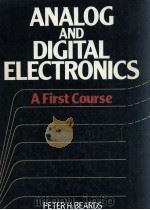
- ANALOG AND DIGITAL ELECTRONICS: A FIRST COURSE
- 1987 PRENTICE/HALL INTERNATIONAL
-
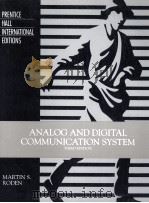
- Analog and Digital communication systems
- 1991 California State University
-
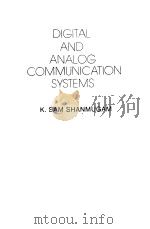
- DIGITAL AND ANALOG COMMUNICATION SYSTEMS
- 1979年 JOHN WILEY & SONS
-
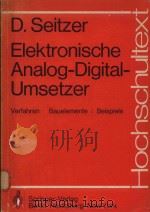
- Elektronische Analog-Digital-Umsetzer
- 1977 Springer-Verlag
-
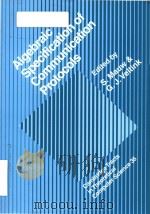
- Algebraic specification of communication protocols
- 1993 Cambridge University Press
-
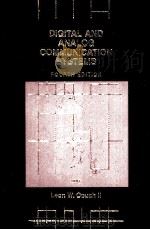
- DIGITAL AND ANALOG OCMMUNICATION SYSTEMS FOURTH EDITION
- 1993 MACMILLAN PUBLISHING COMPANY
-
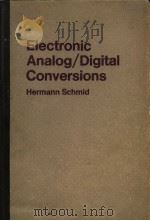
- ELECTRONIC ANALOG/DIGITAL CONVERSIONS
- 1970 VAN NOSTRAND REINHOLD COMPANY
-

- ANALOG AND DIGITAL FILTER DESIGN USING C
- 1996 PRENTICE HALL PTR
-
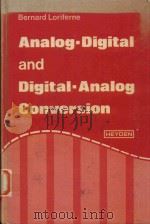
- ANALOG-DIGITAL AND DIGITAL-ANALOG CONVERSION
- 1981 HEYDEN
-
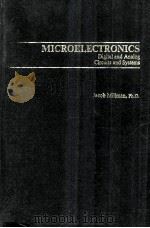
- MICROELECTRONICS DIGITAL AND ANALOG CIRCUITS AND SYSTEMS
- MCGRAW-HILL BOOK
提示:百度云已更名为百度网盘(百度盘),天翼云盘、微盘下载地址……暂未提供。➥ PDF文字可复制化或转WORD


